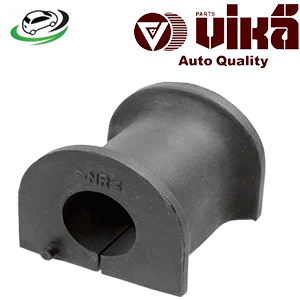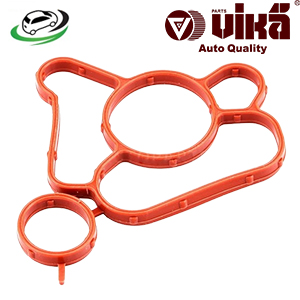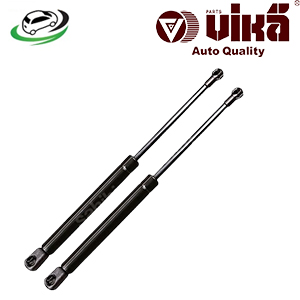-13%
Get Hood Strut Shock Damper Lift A4 Audi B6/S4 Audi B7/A4 Quattro Audi B7/A4 Audi B7/S4 Audi B6/RS4 Audi B7 8E0823359A
A hood strut, also known as a hood shock or hood damper, is a critical yet often overlooked component of a vehicle. It plays an essential role in holding the vehicle’s hood open and controlling its movement when opening or closing. Understanding the function, types, benefits, signs of wear, and maintenance of hood struts can help ensure that your vehicle’s hood operates smoothly and safely.
What is a Hood Strut?
A hood strut is a gas-charged or hydraulic cylinder that supports the weight of the vehicle’s hood when it is open. It also helps to control the speed and force with which the hood opens and closes, providing a smooth and safe operation. Hood struts are found in most modern vehicles and are typically installed in pairs, one on each side of the hood.
Components of a Hood Strut
- Cylinder: The main body of the hood strut, usually made from metal, contains the gas or hydraulic fluid that provides the pressure needed to support the hood.
- Piston Rod: A metal rod that extends from the cylinder. When the hood is lifted, the piston rod extends out of the cylinder, supporting the hood in the open position.
- Seals: Seals are located inside the cylinder and around the piston rod to prevent the gas or fluid from leaking out. These seals ensure that the strut maintains its pressure over time.
- Mounting Points: Hood struts have mounting points at both ends—one attached to the hood and the other to the vehicle’s body. These mounting points are typically ball-and-socket joints, allowing for smooth movement.
Function of a Hood Strut
The primary function of a hood strut is to support the hood in the open position, preventing it from falling unexpectedly. It also controls the speed and force with which the hood opens and closes, ensuring a smooth and safe operation.
Key Functions
- Support the Hood: Hood struts bear the weight of the hood when it is open, allowing you to work safely under the hood without worrying about it falling. This is particularly important for heavy hoods found on larger vehicles like trucks and SUVs.
- Control Hood Movement: Hood struts provide a controlled movement when opening and closing the hood. They prevent the hood from slamming shut, which can cause damage to the vehicle and pose a safety hazard.
- Reduce Manual Effort: Hood struts reduce the amount of manual effort required to lift the hood, making it easier to open, especially for people with less physical strength.
Types of Hood Struts
Hood struts come in various types, each designed to meet specific needs and vehicle requirements. The two main types of hood struts are gas-charged struts and hydraulic struts.
Gas-Charged Hood Struts
- Characteristics: Gas-charged hood struts are the most common type found in modern vehicles. They contain pressurized nitrogen gas, which provides the force needed to support the hood and control its movement.
- Advantages: Gas-charged struts offer smooth, consistent performance and are relatively lightweight. They are also highly durable, providing long-lasting support for the hood.
- Disadvantages: Over time, the gas inside the strut can slowly leak, reducing the strut’s effectiveness. However, this process is gradual, and high-quality struts can last for many years before needing replacement.
Hydraulic Hood Struts
- Characteristics: Hydraulic hood struts use hydraulic fluid to provide the necessary pressure and control for supporting the hood. These struts are less common than gas-charged struts but are still used in some vehicles.
- Advantages: Hydraulic struts provide smooth, consistent operation and are less affected by temperature changes than gas-charged struts. They also offer excellent control over the speed of hood movement.
- Disadvantages: Hydraulic struts can be more prone to leaks than gas-charged struts, especially if the seals wear out. They may also be slightly heavier and more expensive.
Benefits of Hood Struts
Hood struts offer several benefits that enhance the overall convenience, safety, and functionality of a vehicle. These benefits include ease of use, improved safety, and protection for the vehicle.
Ease of Use
- Reduced Effort: Hood struts significantly reduce the amount of effort required to open and close the hood. This is especially beneficial for those who may struggle with lifting heavy hoods.
- Smooth Operation: Hood struts provide a smooth and controlled motion when opening and closing the hood, preventing it from slamming shut or bouncing open.
Improved Safety
- Prevents Accidents: Hood struts hold the hood securely in place, preventing it from falling unexpectedly. This reduces the risk of injury when working under the hood.
- Controlled Closing: The struts slow down the closing of the hood, preventing it from slamming shut, which could cause damage or injury.
Vehicle Protection
- Prevents Hood Damage: By controlling the movement of the hood, struts prevent it from slamming shut, which can cause damage to the hood or other parts of the vehicle.
- Protects Under-Hood Components: Hood struts help keep the hood open securely, reducing the risk of accidentally damaging under-hood components during maintenance or inspection.
Signs of Worn-Out Hood Struts
Like all automotive components, hood struts can wear out over time. Recognizing the signs of worn-out hood struts is essential for maintaining the safety and functionality of your vehicle.
Common Symptoms of Worn Struts
- Hood Falls or Doesn’t Stay Open: One of the most obvious signs of worn-out hood struts is the hood falling or failing to stay open. This indicates that the struts are no longer providing enough support.
- Slow or Difficult Hood Opening: If the hood is slow to open or requires more effort to lift than usual, it may be a sign that the struts are losing their effectiveness.
- Noisy Operation: Worn struts may produce a hissing or squeaking noise when opening or closing the hood. This can indicate that the gas or hydraulic fluid is leaking, or that the seals are worn.
- Visible Damage: During a visual inspection, you may notice leaks, rust, or other visible damage on the struts. Any signs of damage should prompt immediate replacement to avoid further issues.
Maintenance and Inspection of Hood Struts
Regular maintenance and inspection of hood struts are essential for ensuring their longevity and performance. Proper care can help prevent unexpected failures and ensure that your vehicle’s hood operates smoothly.
Inspection Tips
- Visual Inspection: Periodically inspect the hood struts for any visible signs of wear or damage, such as leaks, rust, or corrosion. Check the seals around the piston rod for any signs of deterioration.
- Test Hood Support: Open the hood and check if it stays open without any signs of sagging or falling. If the hood doesn’t stay up or falls quickly, the struts are likely worn out and need replacement.
- Listen for Noises: Pay attention to any unusual noises, such as hissing or squeaking, when opening or closing the hood. These noises can indicate that the struts are failing.
Maintenance Tips
- Clean the Struts: Keep the struts clean and free of dirt and debris, which can cause wear on the seals and reduce the struts’ effectiveness.
- Lubricate the Mounting Points: Periodically lubricate the ball-and-socket joints at the mounting points to ensure smooth movement and reduce wear.
- Replace Worn Struts Promptly: If you notice any signs of wear or damage, replace the struts as soon as possible to avoid further issues. Delaying replacement can lead to a sudden failure, which could cause the hood to fall unexpectedly.
Replacing Hood Struts
Replacing hood struts is a relatively simple task that can be done with basic tools. Here’s a step-by-step guide to help you through the replacement process.
Replacement Process
- Secure the Hood: Before removing the old struts, ensure the hood is securely supported with a prop rod or have someone hold it in place to prevent it from falling.
- Remove the Old Struts: Locate the mounting points where the struts are attached to the hood and the vehicle’s body. Use a screwdriver or a small pry tool to remove the retaining clips or bolts holding the struts in place. Once the clips or bolts are removed, the strut should come off easily.
- Install the New Struts: Position the new strut in place, aligning it with the mounting points. Attach the strut to the mounting points using the provided clips or bolts. Make sure the strut is securely fastened.
- Test the Hood: After installing the new struts, gently lower the hood to check for smooth operation. Then, open the hood to ensure it stays open without any issues.
- Dispose of the Old Struts: Properly dispose of the old struts, as they may contain pressurized gas or hydraulic fluid that requires special handling.
Follow us on Facebook for more parts.



